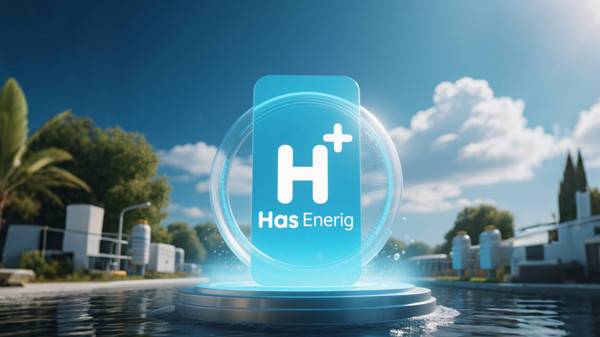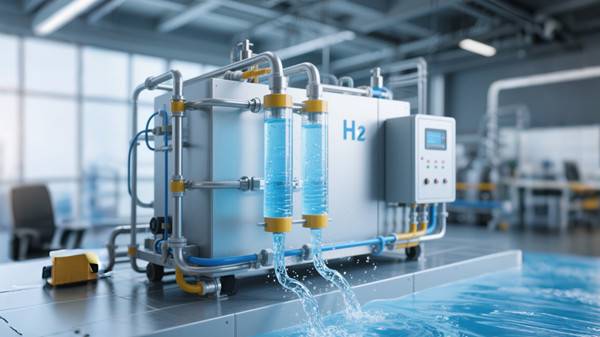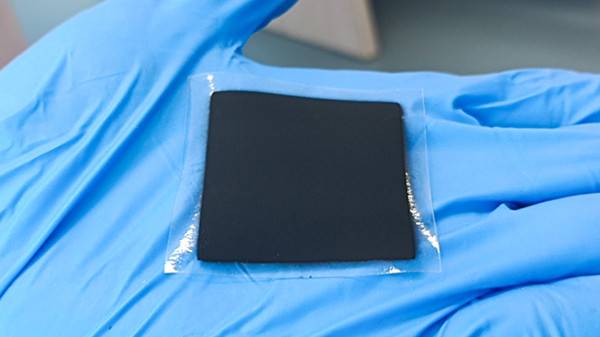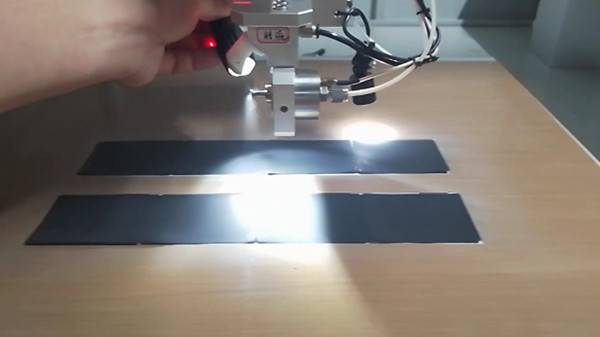Prospects of AEM Water Electrolysis Hydrogen Production
Prospects of AEM Water Electrolysis Hydrogen Production: Breaking through obstacles and moving towards the future
Against the backdrop of the global active search for sustainable energy solutions, AEM water electrolysis hydrogen production technology has become a highly promising hydrogen production method due to its clean and efficient characteristics. However, limited by key material technology problems and many challenges in the manufacturing process, AEM water electrolysis technology is still some distance away from large-scale practical application. Combined with the current research status of AEM electrolysis technology, we can look forward from the following key directions to fully promote the development and commercialization of AEM electrolysis technology.
1. Overcoming AEM material difficulties
Developing AEMs (anion exchange membranes) with high ionic conductivity, high strength and high chemical stability is undoubtedly the core task to break through the bottleneck of AEM water electrolysis hydrogen production technology development. At this stage, the research and development of AEMs is still in its infancy. Under the harsh conditions of water electrolysis hydrogen production, it is difficult for existing products to simultaneously take into account key performance indicators such as ionic conductivity, chemical stability and mechanical stability. In addition, currently only smaller-sized products can be provided, which is far from meeting the needs of large-scale industrial applications.
To change this situation, researchers need to explore the degradation mechanism of polymer backbone and cationic groups. By developing highly active cationic group/main chain/side chain structures and cleverly regulating the connection mode between cationic groups and polymer backbones, efficient and stable ion transport channels can be constructed. In this way, it is expected to significantly improve the ionic conductivity of AEMs and enhance their stability, laying a solid material foundation for the large-scale application of AEM water electrolysis hydrogen production technology.
2. Strengthening mechanism and theoretical research
- Research on failure mechanism of anion exchange membrane: It is of vital importance to deeply analyze the failure mechanism of anion exchange membrane and clarify the reasons for its degradation and the root causes of its limited life. Only by accurately grasping these key information can the membrane material be optimized and improved in a targeted manner to effectively improve its stability and durability. This can not only improve the electrolysis efficiency, but also enhance the reliability of the entire electrolysis system and reduce equipment failures and maintenance costs caused by membrane failure.
- Exploration of transport behavior in the electrolyzer: In-depth research on the transport behavior of water molecules and gas products in the electrolyzer, especially its kinetic characteristics such as confinement and diffusion, is crucial for designing a more efficient electrolysis system. By fully understanding the transport mechanism of reactants and products, the structure and operating parameters of the electrolyzer can be optimized and adjusted to ensure that the reactants can be quickly and evenly distributed in the electrolyzer, improve reaction efficiency, and reduce energy consumption.
- OER/HER mechanism research: In-depth exploration of the OER (oxygen evolution reaction)/HER (hydrogen evolution reaction) mechanism and revealing the generation mechanism of oxygen and hydrogen during electrolysis play an important guiding role in the development of more efficient and economical catalysts. By studying the active center and reaction path of the catalyst, the structure of the catalyst can be accurately designed to improve its catalytic activity, thereby significantly improving the yield of oxygen and hydrogen, while reducing energy loss and improving energy utilization efficiency. However, the current research on the failure mechanism of anion exchange membranes, water transport kinetics, OER/HER mechanism, etc. is still not in-depth enough. Theoretical research based on these aspects is the key to achieving breakthroughs in AEM electrolysis technology and needs to be strengthened urgently.
3. Create high-performance electrolyzer components
In order to compete effectively with existing electrolyzer technologies in the market, AEMWE (anion exchange membrane water electrolysis) needs to achieve material and technology innovations in cathode, anode electrocatalysts, ionomers, and membrane electrode assembly integration in addition to making breakthroughs in AEMs.
- OER electrocatalyst optimization Among non-transition metal OER electrocatalysts, NiFe-based catalysts have shown relatively outstanding activity. However, there are still many controversies about the active site mechanism of NiFe-based catalysts, and research on stability and potential degradation mechanisms needs to be strengthened. In-depth research in these areas will help further improve the performance of NiFe-based catalysts and enable them to play a greater role in AEM water electrolysis hydrogen production.
- HER electrocatalyst research and development: In the field of HER electrocatalysts, the most outstanding performance is still various PtNi and Pt/C platinum-based catalysts. Among non-platinum-based catalysts, NiMo and NiCo-based catalysts have great development potential. Studies have found that the doping of heteroatoms such as nitrogen, phosphorus, and sulfur can effectively improve HER activity. Continuously strengthening the research and development of these non-platinum-based catalysts, especially the research on bifunctional catalysts, is expected to further simplify the system, reduce costs, and significantly enhance the market competitiveness of AEMWE.
- Improvement of ionomer performance: It is also critical to develop ionomers with high ion conductivity and high chemical stability. Studies have shown that the impact of AEI (anion exchange ionomer) on electrolysis performance even exceeds that of AEMs. However, most current research focuses on the development of AEMs and electrocatalysts, and research on ionomers is relatively insufficient, and it is urgent to increase investment to improve the performance of ionomers.
- Improvement of membrane electrode assembly integration: At present, the research on the characteristics of MEA (membrane electrode assembly) is not perfect, especially the characteristics of the interface between the catalyst layer and the membrane, and the interface between the catalyst layer and the porous transport layer are not very clear. In-depth research in this area and optimization of the integration process of membrane electrode assemblies are crucial to improving the performance of AEM water electrolysis hydrogen production system.
- Improvement of other components: In addition, it is also necessary to improve the gas diffusion layer and bipolar plate to enhance their heat and mass transfer capabilities and improve battery efficiency. At the same time, actively explore the transition of electrolyte from weak alkaline solution to pure water or even seawater, which will further reduce operation and maintenance costs and create more favorable conditions for the large-scale application of AEM water electrolysis hydrogen production technology.
4. Application and advantages of Cheersonic ultrasonic spraying technology
In the development process of AEM water electrolysis hydrogen production technology, Cheersonic ultrasonic spraying technology plays an important role that cannot be ignored.
- AEM preparation: In the preparation process of AEM, Cheersonic ultrasonic spraying technology can spray functional materials evenly into the membrane material. By precisely controlling the frequency, amplitude and other parameters of the ultrasonic wave, key materials such as ion conduction promoters can be accurately dispersed in the membrane, thereby effectively improving its ion conductivity while ensuring the mechanical strength of the membrane. Compared with traditional material addition methods, this technology can ensure a more uniform distribution of additives and avoid affecting the overall performance of the membrane due to local concentration differences. At the same time, it can also form a uniform protective coating on the membrane surface, significantly improving the chemical stability of the membrane in a complex electrolysis environment and extending its service life.
- Electrocatalyst coating: Cheersonic ultrasonic spraying technology has unique advantages for the coating of cathode and anode electrocatalysts. Traditional coating methods easily lead to uneven distribution of catalysts on the electrode surface, agglomeration, and reduced catalytic activity. Cheersonic ultrasonic spraying technology can atomize the catalyst slurry into extremely small and uniform droplets, and spray them accurately on the electrode substrate. This not only greatly improves the utilization rate of the catalyst, exposes more active sites, and enhances the catalytic activity of the electrode, but also makes the catalyst more firmly bonded to the electrode substrate, improves the stability of the electrode during long-term use, and effectively reduces the performance degradation caused by catalyst shedding.
- Membrane electrode assembly integration assistance: During the integration of membrane electrode assemblies, Cheersonic ultrasonic spraying technology can be used to optimize the interface between the catalyst layer and the membrane, and between the catalyst layer and the porous transport layer. By spraying special functional materials at the interface, the ion conductivity and contact stability of the interface can be improved, the interface resistance can be reduced, and the performance of the entire membrane electrode assembly can be improved. At the same time, this technology can ensure the uniform distribution of spraying materials, improve the consistency and stability of the production process, and facilitate the large-scale production of high-quality membrane electrode assemblies.
- Improve production efficiency and quality: From a production perspective, Cheersonic ultrasonic spraying technology is efficient and precise. In the large-scale production process of AEM water electrolysis hydrogen production equipment, it can achieve fast and uniform spraying operations, greatly improving production efficiency. In addition, this technology has a high utilization rate of materials, which can effectively reduce material waste in the production process and reduce production costs. Its stable spraying effect ensures the consistency of the quality of each batch of products, providing strong support for the commercial promotion of AEM water electrolysis hydrogen production technology.
In summary, through joint efforts in material research and development, mechanism research, component optimization, and with the help of advanced technologies such as Cheersonic ultrasonic spraying technology, AEM water electrolysis hydrogen production technology is expected to break through existing obstacles, achieve large-scale practical applications, and inject strong impetus into the development of global clean energy.
About Cheersonic
Cheersonic is the leading developer and manufacturer of ultrasonic coating systems for applying precise, thin film coatings to protect, strengthen or smooth surfaces on parts and components for the microelectronics/electronics, alternative energy, medical and industrial markets, including specialized glass applications in construction and automotive.
Our coating solutions are environmentally-friendly, efficient and highly reliable, and enable dramatic reductions in overspray, savings in raw material, water and energy usage and provide improved process repeatability, transfer efficiency, high uniformity and reduced emissions.
Chinese Website: Cheersonic Provides Professional Coating Solutions




